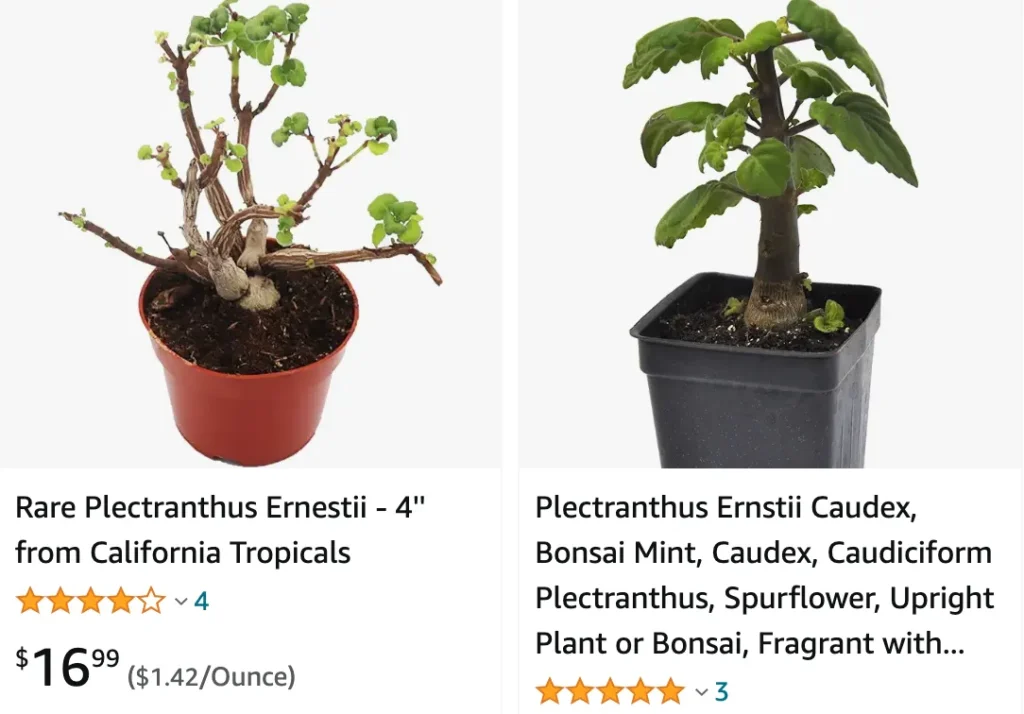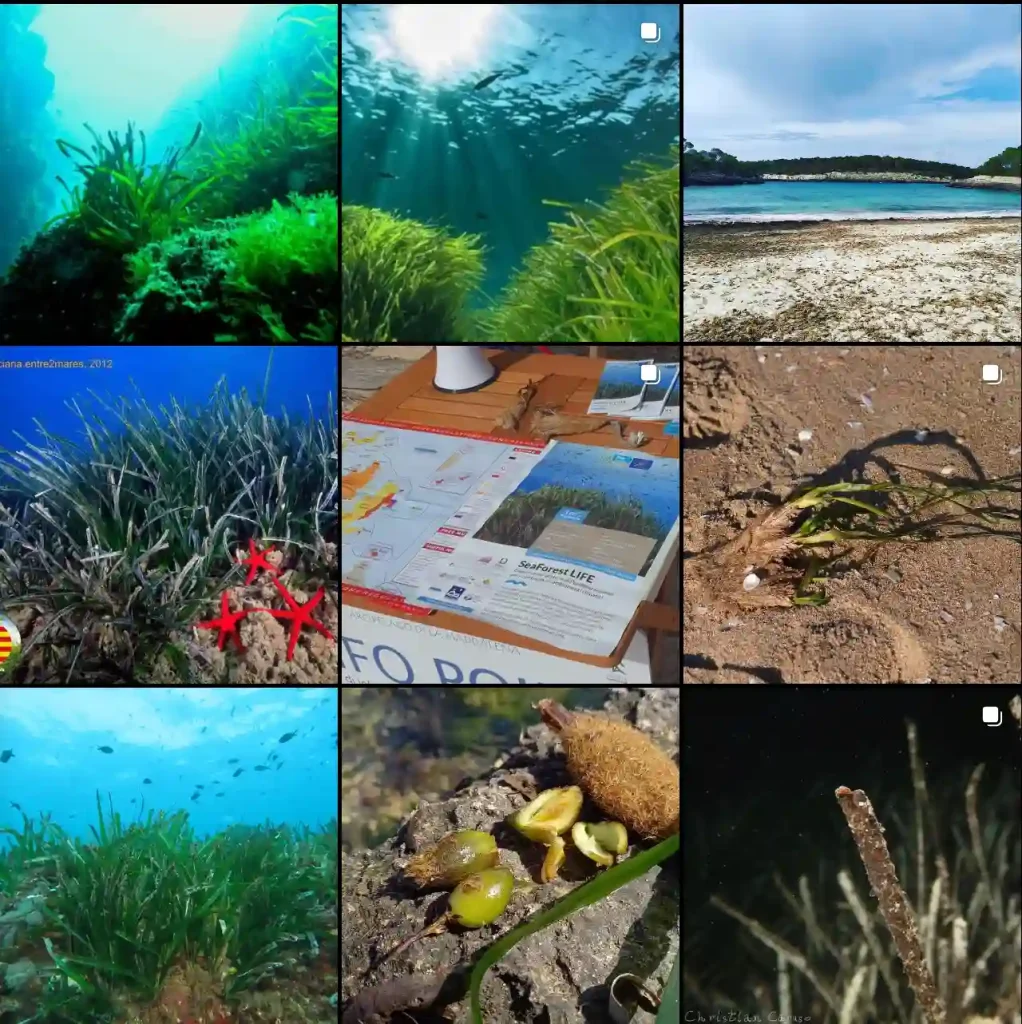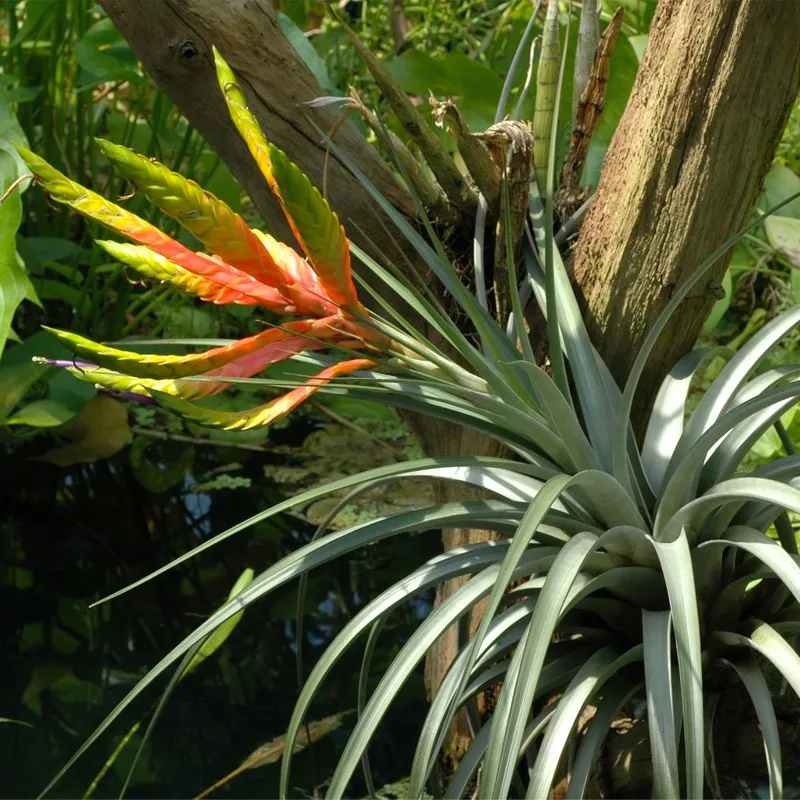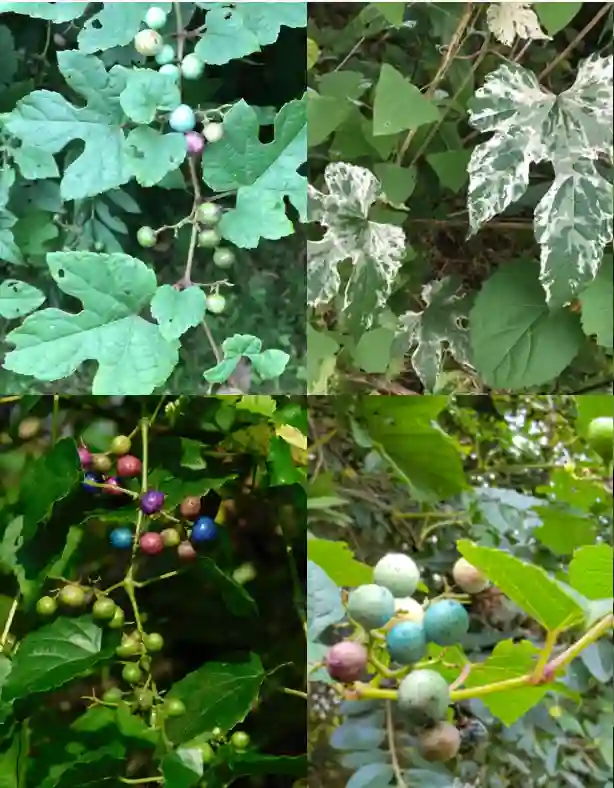
All About Plectranthus Ernstii: The Bonsai Mint for Busy Plant Parents
Hi, Ferb Vu here! Today, we’re diving into the world of Plectranthus ernstii, a charming little plant with a whole lot to offer. Often nicknamed “bonsai mint” or “bonsai spurflower,” this South African native has become a favorite amongst houseplant enthusiasts for its unique looks, easy care needs, and delightful fragrance.
If you’re considering adding a Plectranthus ernstii to your collection, you’ve come to the right place. Let’s answer some of the most common questions about this little gem:
83 Species in Genus Plectranthus
What is Plectranthus ernstii?
Plectranthus ernstii is a small, perennial succulent belonging to the Lamiaceae family, the same family that includes mint, rosemary, and lavender. This explains the “mint” part of its nickname. It features fleshy, slightly fuzzy leaves that release a pleasant minty aroma when brushed against.
The real star of the show, however, is the plant’s structure. Plectranthus ernstii boasts segmented stems that harden over time, giving it a compact, almost bonsai-like appearance. This unique structure makes it a delightful addition to any desk or windowsill.
Plectranthus ernstii vs. Swedish Ivy: The Lookalikes
Plectranthus ernstii can sometimes be mistaken for Swedish Ivy (Plectranthus australis) due to their similar foliage. However, there are some key differences to keep in mind:
- Growth habit: Plectranthus ernstii has a more compact, upright growth, while Swedish Ivy is a trailing vine.
- Leaf shape: Plectranthus ernstii’s leaves are rounder and more succulent, while Swedish Ivy’s leaves are more lobed and pointed.
- Light needs: Plectranthus ernstii prefers bright, indirect sunlight, while Swedish Ivy can tolerate lower light conditions.
Is Plectranthus ernstii easy to care for?
Absolutely! Plectranthus ernstii is a dream come true for busy plant parents. Here’s what you need to know:
- Light: Provide your Plectranthus ernstii with bright, indirect sunlight for optimal growth. South-facing windows (in the Northern Hemisphere) or East-facing windows (in the Southern Hemisphere) are ideal.
- Watering: Water your plant only when the soil feels dry to the touch. Overwatering is a common mistake with succulents, so err on the side of underwatering.
- Soil: Use a well-draining potting mix specifically formulated for succulents or cacti. This will ensure proper drainage and prevent root rot.
- Fertilizer: You don’t need to fertilize your Plectranthus ernstii frequently. A light feeding once or twice during the growing season (spring and summer) with a balanced liquid fertilizer diluted to half strength is sufficient.
Does Plectranthus ernstii flower?
Yes, Plectranthus ernstii can produce small, lavender-colored flowers during the summer months. These flowers are quite attractive and add another layer of interest to the plant. However, some people prefer to remove the flower buds to encourage bushier growth.
Can I propagate Plectranthus ernstii?
Propagating Plectranthus ernstii is a breeze! You can do it through stem cuttings. Simply take a healthy stem cutting with a few nodes, remove the lower leaves, and plant it in a pot filled with well-draining potting mix. Keep the soil moist but not soggy, and place the cutting in bright, indirect sunlight. With a little patience, you’ll soon have a brand new Plectranthus ernstii on your hands.
Is Plectranthus ernstii pet-safe?
While Plectranthus ernstii isn’t considered toxic enough to cause serious harm, it’s still best to keep it out of reach of curious pets. The leaves contain small amounts of essential oils that can cause mild stomach upset if ingested in large quantities.
Plectranthus ernstii: A Touch of South Africa for Your Home
Plectranthus ernstii is a charming and low-maintenance plant that brings a touch of South African charm to your home. With its easy-going nature, delightful fragrance, and unique bonsai-like structure, it’s no wonder this little succulent has become a favorite among plant enthusiasts. So, if you’re looking for a fuss-free plant that adds a touch of personality to your space, look no further than the Plectranthus ernstii!
If i die, water my plants!



